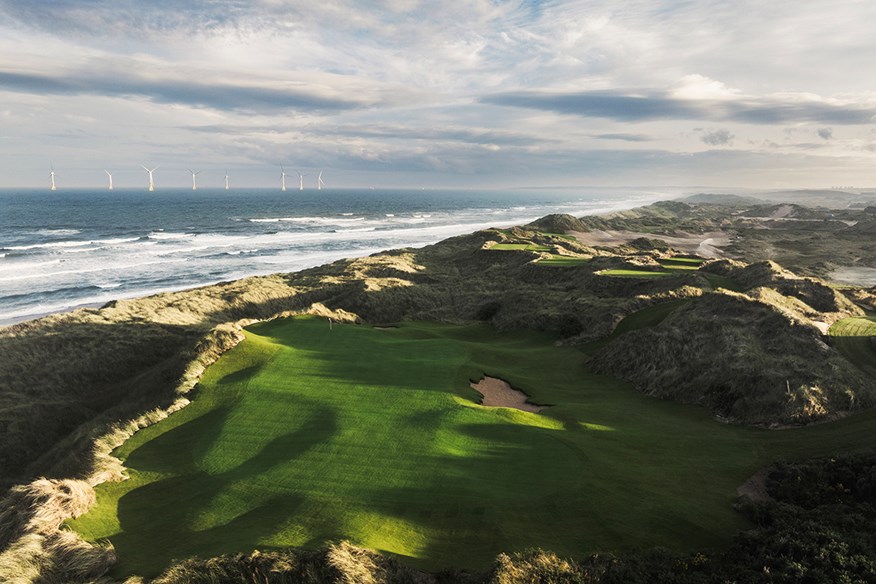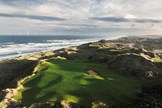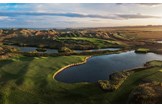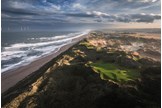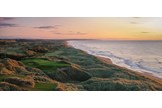I was one of the first to visit Donald Trump’s new Scottish links course – here’s my honest verdict
Last updated:
Sequels that are better than the original are not a common occurrence. But it might happen in the north-east of Scotland this summer, when Trump Scotland’s second course opens for play. After walking all 18 holes three months before it opens, I think it will at least rival the first course, if not better it – and is set to be one of the best courses in Great Britain and Ireland.
Examples of second or third courses that surpass the original at a golf club are inevitably few and far between; the best land is naturally selected for the first course, and the budget for its architect and construction is also likely to be larger.
One could argue some of the later courses at Bandon Dunes top the original, and St Patrick’s is to my mind comfortably the best of the trio at Rosapenna, though even that comparison is complicated by it being on adjacent land that was purchased relatively recently.
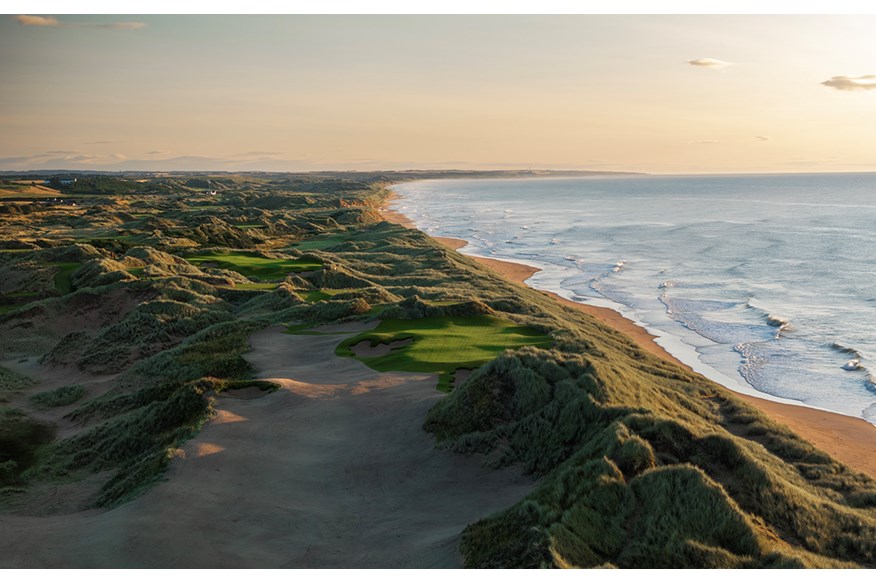
While the Old Course at Trump Scotland is unquestionably one of the most spectacular and dramatic courses in GB&I (it could not have been anything else, given the breathtaking dunescape in which it sits), the site for the New did not have such consistently outstanding land. It’s very good, and the majority of it is prime terrain for great golf, but the canvas was not jaw-droppingly great from start to finish.
That is what makes what has been built there so impressive.
It has three phases. It starts in what was wetland before journeying through a seaside section from the 8th to the 14th – which I think will be regarded as the best on the whole property – before returning inland for the final four.
These distinct areas inevitably offer greater variety than the dune-tastic Old, but the holes themselves on the New are also more diverse.
There are cute, short par 3s as well as a beastly, long par 3. There are stout, exacting par 4s and charming, driveable par 4s. There are delicious, reachable par 5s and brawny, three-shot par 5s. And, unlike the Old, those par 5s don’t all play uphill to tiered greens.
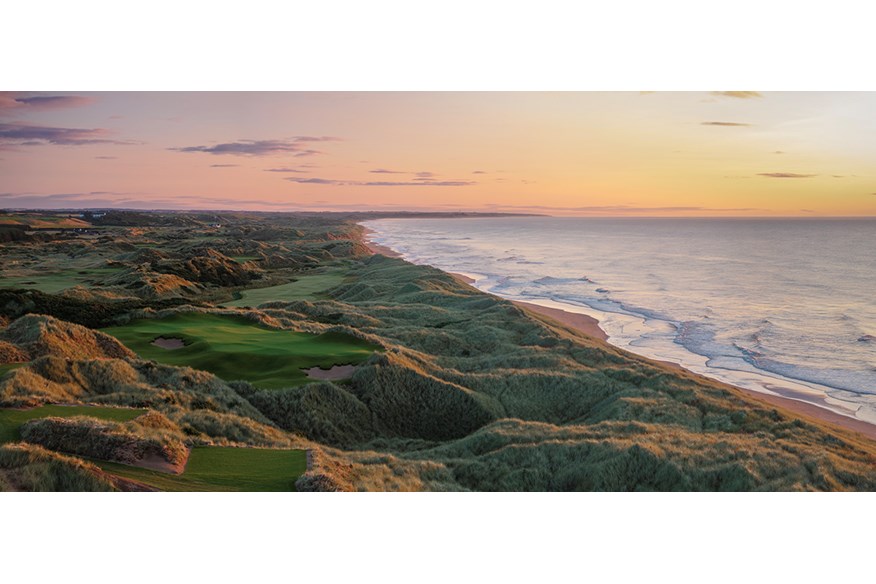
There are a couple of uphill holes on the New, but more shoulder-opening downhill ones.
The New does not exist to beat you up and is happily far more forgiving off the tee than the Old.
The playing corridors look notably wider and, unlike its older sister, there are very few high tees (and I don’t think any of them will be the daily tees).
Never did I stand on a tee box and think I had it all on to ever see my ball again.
There is far more movement in the fairways than the Old, whose holes tend to travel along broadly flat corridors between colossal dunes. The shaping is generally excellent and only occasionally a touch overdone – which on a project like this is a success.
The New has lots of sandy scrape areas and their visual presence tie the various phases together.
At a glance, these sandscrapes can be hard to distinguish from the New’s relatively low-lipped, fescue-framed fairway bunkers.
They are a lot easier to escape from than revetted pots, and while they look a little blunt at the moment, they will soften beautifully as nature takes its course.
It is, though, moderately bunkered. There are very few around the greens – I can recall only half a dozen – and this restraint is commendable.
You can also run the ball on the green several times – whereas on the Old the targets are often raised and protected by run-offs.
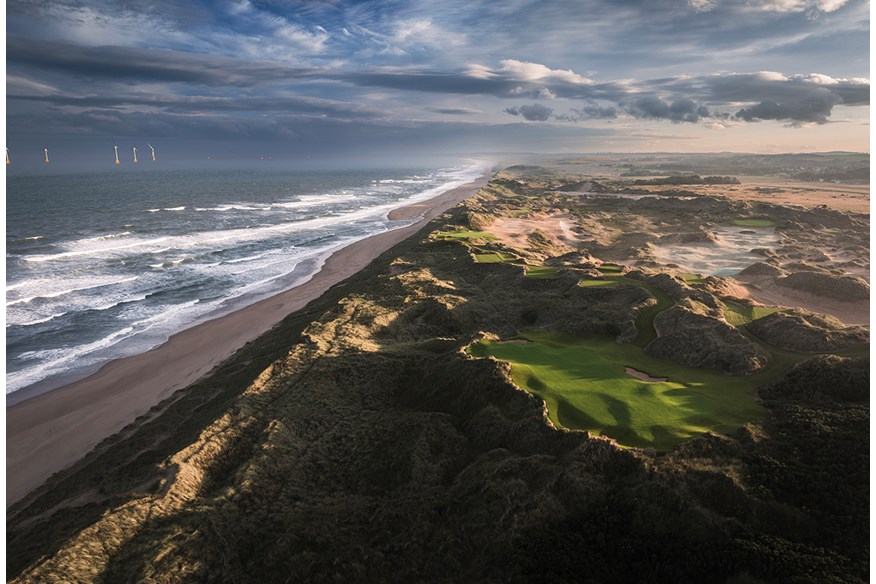
The New has bigger greens than the Old, but also much more substantial movement. That undulation is contained by their size, though, and the pin-able areas are huge. On a calm day they will run quick, but generally won’t be super speedy.
And while the Old has serious X Factor, you can see the sea from every hole on the New, even if it is just a glimpse between two sand hills. On the Old, it is notable on holes such as the 3rd and the 14th, but less consistently visible than you might think.
The New gives you a constant relationship between the course and the North Sea as well as nice views of its sister, such as two greens on the Old from the New’s 1st green.
So, all that taken into account, you will not take any convincing that the New is in no sense a toned-down version of the Old, which it easily could have been.
If you were blindfolded and dropped on a hole on the New having played the Old, you would not know you were at the same club. I think this distinct differentiation is a very wise strategy by Trump Scotland.
If you are wondering why I haven’t yet mentioned the architect who did all this good work, it is because it is difficult to state definitively.
Martin Hawtree, the principal architect of the Old, produced an initial routing more than a decade ago, but this is not a Hawtree design.
The project has been driven by Eric Trump and an experienced team including Hawtree – who has played a consultancy role – as well as Swedish architect Christian Lundin, who works with Henrik Stenson, and Canadian designer Christine Fraser.
The constant presences throughout construction were Esie O’Mahony and Jamie O’Reilly of Golflink, shaper Peter Scott and superintendent Steven Wilson, all working under the direction of Trump and Trump Scotland’s executive vice-president Sarah Malone.
So, this really was a collaboration between individuals.
Trump Scotland’s New course – hole-by-hole
Trump Scotland’s New course was handcrafted out of the sand. That is evident right from the start. The 1st and 18th have been swapped from the original routing in order to save a steep walk up to the opening tee shot.
As soon as I walked onto that opening tee box I could see what a phenomenal grow-in job Wilson and his team have done. The New is ready three months before it will receive play.
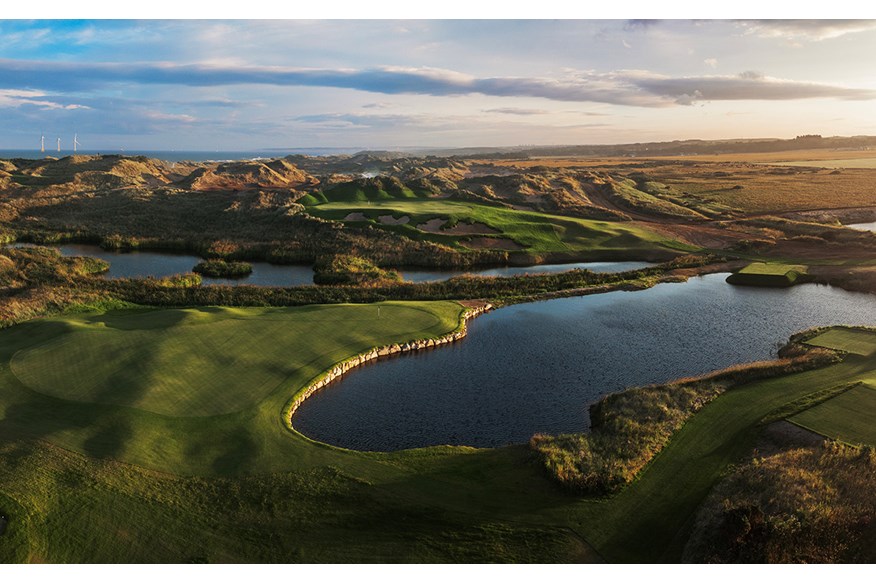
He had the advantage of knowledge gained from working on the Old for 15 years, but it is still a highly impressive effort. There is not as much Rye grass as on the Old, with straight fescue fairways with 10% fine-leaf rye. The greens are 80% fescue, 20% bent, plus pure fescue on the surrounds, rough and semi rough.
The 1st is a par 5 and the fairway must be 70 yards wide. Even in a breeze, you’ll feel you have a chance of short grass for your second.
Down the right of the hole, dunes have been built up to match the natural ones on the left and conceal views beyond the site. It already looks remarkably good, but give it three months and it will blend in even better. Three years in and it will be terrific.
If you play safely down the left, you’ll have a blind second. Go right and it’s an appealing shot into a green with bags of movement – but as it is a par 5, it feels merited.
Your journey on the New has begun.
What felt like the New’s longest green-to-tee walk – the course is walkable, but if buggies are used, they will happily travel on grass paths rather than anything artificial – takes you to the 2nd.
[Further infrastructure that would be useful if the New hosted a tournament and for staff to use on a daily basis has been avoided with the construction of a cross-site underpass in the middle of the course.]
The par-4 2nd dares you to cut the corner from a tee further back – or otherwise hit a shot out to a wide area on the left. It’s a tough hole from those tees, but arguably best off the one that makes it a mid-300-yard hole.
They are both in the former wetland area, where clay material was harvested from elsewhere on the site to build the land up before piles of sand were brought in from the ‘southern dome’ to cap it and make it play like a links.

Not a grain of external sand was brought in to create the New – and you can see why when you get into the dome later in the round.
It’s on the first of par 3s at the 3rd that you feel you are really in a former wetland.
It plays over ponds split by a path, which I know does not scream ‘classic links’. The water was already there – they have just created more of a collection area by building up the surrounds and created the ponds.
The 4th is a driveable par 4 for the big hitters off forward tees, or if you want to play conservatively, you hit up the left. It looks quite narrow off the tee, but it’s actually quite a wide landing area, and everything off the left feeds down.
There will be a lot of balls from ambitious drives that find the ponds located down the right. Those hazards may be cursed by golfers, but they will be welcomed by environmentalists.
Trump Scotland have learned from the process of building the Old in design and agronomic terms, and that is also true in environmental terms.
The ponds in this wetland phase are havens to many species of birds and ducks. Nature seems to be thriving and you’d imagine the environmental team who have consulted on the project are content with the scenario.
It feels like the wetland phase now morphs into a heathy environment with heather lining the fairway of the next. Some is exactly where it has always been and some has been translocated to frame the left of the fairway.
The 5th is a good example of the restraint with greenside bunkers on the New. One was initially planned here within the mound that obscures the middle of the wide but relatively shallow green, but it is currently a grassy hollow. I hope it stays that way.
Still playing between swathes of heather, the 6th felt like the narrowest drive and the left-hand approach bunker combined with the pond on the right makes this dog-leg left par 5 one to plot your way down.
The second par 3 is very different from the first. It plays initially over water – but which is not really in play – and distinctly uphill to an angled green. Bunkers buttress the left side but they are actually a help as they will stop pulled tee shots running all the way down to the bottom of the hill.
I’m not generally a fan of uphill par 3s so this is not my favourite hole on the New but from the right-hand tee, offering a shot ‘up the green’, it is far from a bad one.
An expanse of sand to the right of the 8th signals you are entering the ‘dome’ and the New has moved up a gear.
The green on this par 4 was pushed back and left relatively recently to enhance its coastal view as well as offer greater sunlight.
I didn’t see it in its original location, but it seems like a very good decision and testament to Trump’s commitment to changing things if required; this will not have been a cheap exercise.
The 9th bounds along another rumpled fairway to the most southerly point of the site, where a super green complex awaits. This is now classic links terrain and takes the golfer to the start of the best section, with top gear located.
Turning round, the North Sea is on your right as you weigh up the options on a wonderful sporty par 4 to start the back nine.

The snaking fairway between tee and green looks fantastic and the sensible play is a 5-iron down the right and a wedge onto an angled green. One-time visitors will understandably likely reach for a three-wood and have a crack at the green.
It plays downwind, as does all of the inward half bar the 13th – a stark contrast to the Old, where the 16-17-18 finish can be beastly into the prevailing.
The 10th green, with glorious North Sea views, has the biggest tier witnessed on the New, and the extreme right and left of it will not often see a pin.
The 11th continues the journey along the coast, with a green perched right on the edge of the bluffs. It is obscured by a large dune on the right, and the wide range of tees – I’d favour the center one that would make it a real two-shot hole – mean optimum angles will change.
Like the 10th, there will therefore be lots of ‘I’d like another go at this’ chatter as groups walk off its green.
This stretch just keeps getting better, with the New’s best par 3 at 12. It feels the most natural hole on the course, as if tees and green were just mown out.
It is such a gloriously wild dunescape that it was tough for O’Mahony and co to get into the terrain and start building in it.
The 12th has a tee that makes it fewer than 100 yards, which felt like it would be plenty exacting and absolutely gorgeous.
From the best par 3, the golfer now moves onto one of the New’s best par 4s. This left-to-right dog-leg plays over the corner of a sand quarry so epic that it could have been the set for a Star Wars film.
A well-shaped fairway leads to a super green, with a fairway bunker 20 yards short of it offering a nice piece of depth deception.
It’s followed by another par 4 I really liked. The 14th will be played at about 350 yards for most golfers, but the bunker within a mound in the middle of the wide but shallow green makes it an interesting yet surmountable challenge.
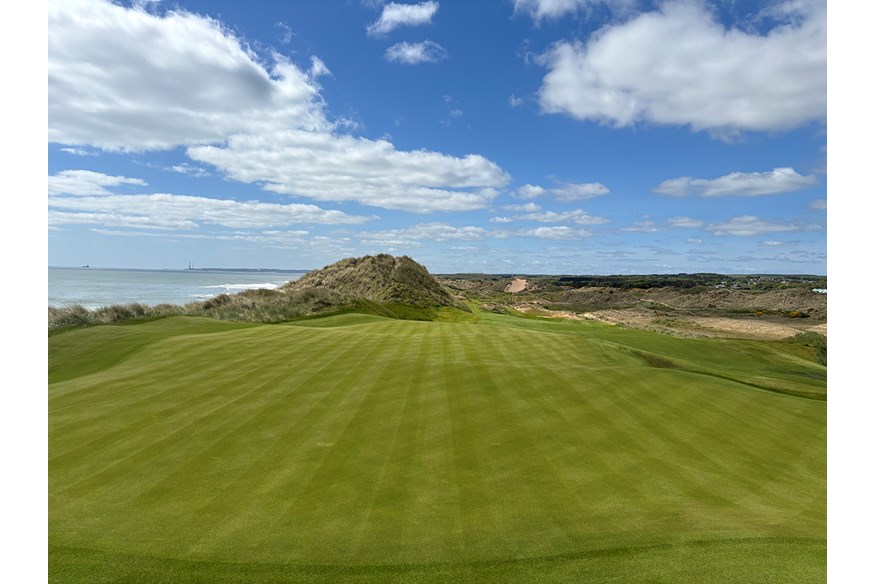
Perhaps because it follows those heroic holes, perhaps because the dunes down the left are the most obviously manufactured, or perhaps because this was the last hole to be seeded, but the 15th – a brawny par 5 – was my least favourite hole. That said, time and nature may well improve it beyond recognition and it could turn out to be a strong hole.
The final par 3 is the most difficult, a muscular hole off the second-back tee and 250 yards off the Blacks.
It’s downwind, though, and the large green tilts back at you, so there is assistance. The sandscapes look good.
A straightaway par 4 at 17 takes us to the home hole. While it isn’t especially inspiring relative to what has gone before in its uphill tee shot, the finish on an infinity green with a wonderful view of the rest of the property and the North Sea beyond is a fine conclusion.
A lot of selfies will be taken on this green, and as golfers walk down to the clubhouse, discussions will start about whether they prefer the New or the Old (which will have the same green fee).
It doesn’t feel impossible that those discussions might even extend to the Oval Office. There will never be a definitive answer to which course is superior. What is certain, though, is that Trump Scotland is going to be home to two of Britain and Ireland’s elite golf courses.
